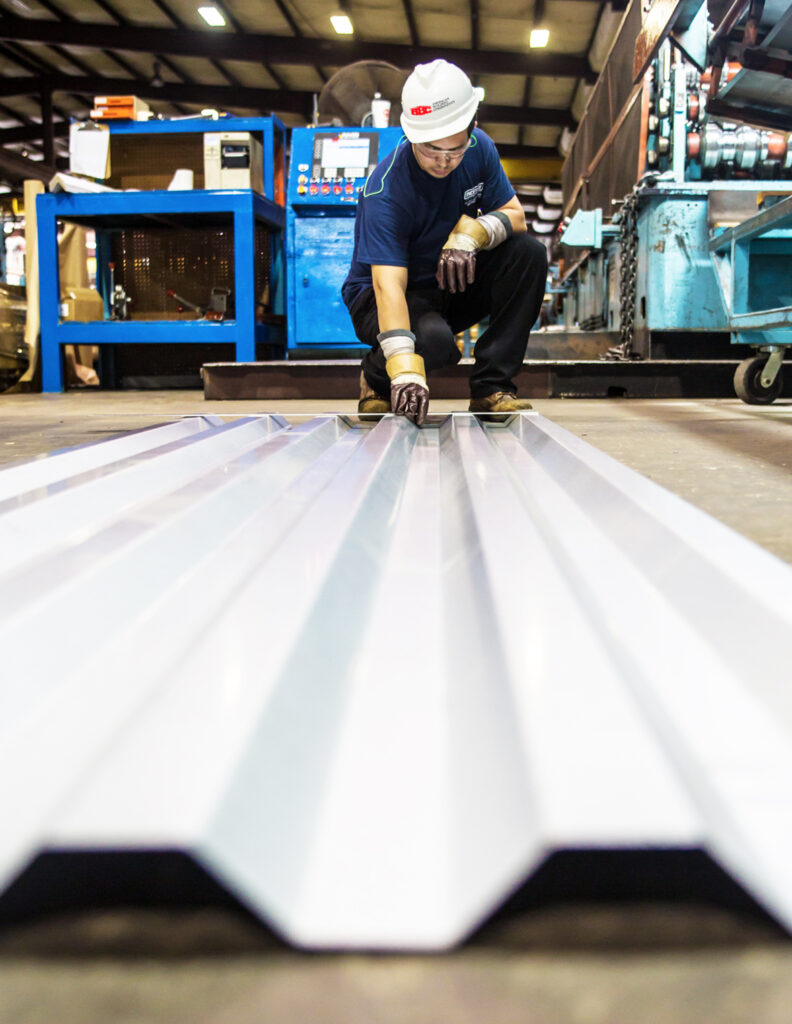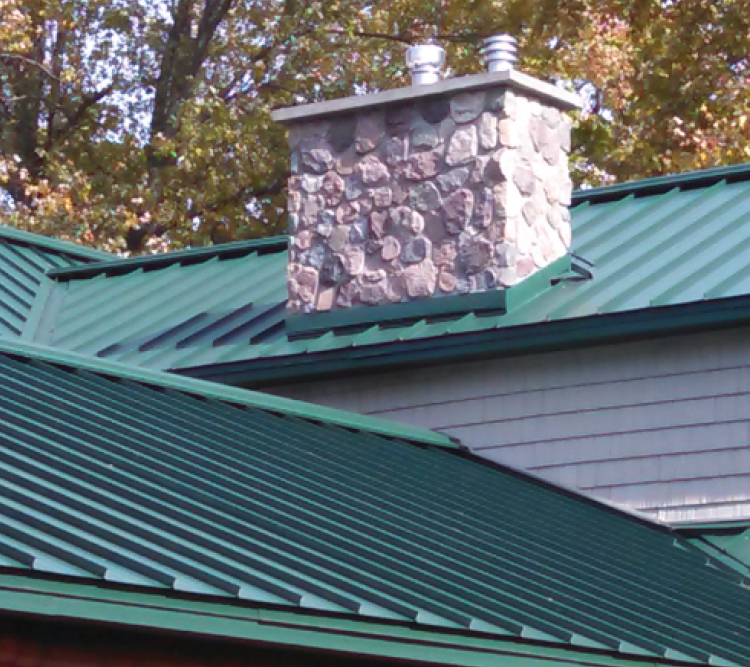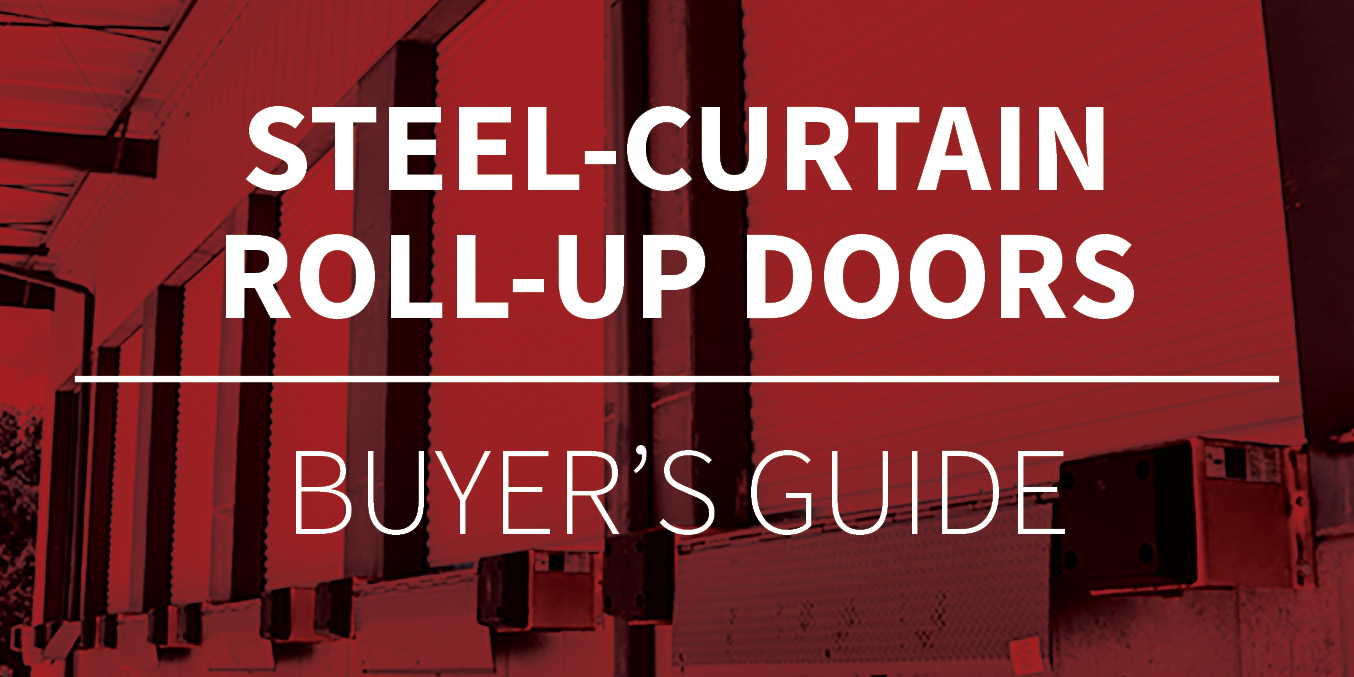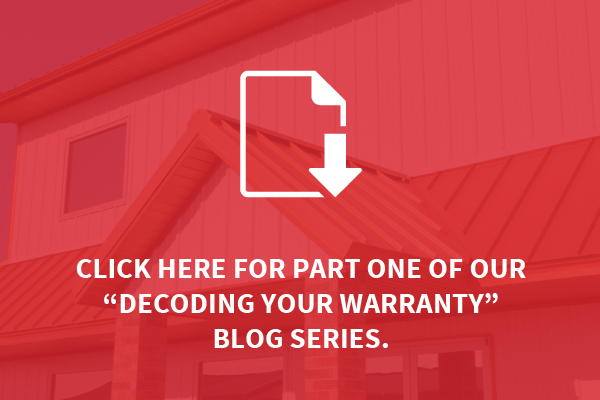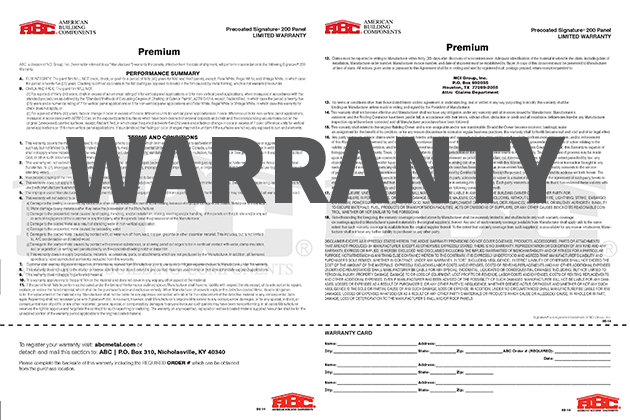Choosing a metal panel color can feel daunting these days. With the number of available metal building colors having expanded from the usual white, tan and Galvalume to more than a couple of dozen options, where do you begin? What factors should influence your decision? Read on for recommendations on key questions to ask to help you make the best decision for both the desired aesthetic as well as longevity, durability and energy efficiency of your metal project.
What colors are metal products available in?
This is the most obvious consideration and can be answered with a simple search of the metal product manufacturer’s website. Authorized dealers also often have physical metal panel color charts, samples or chips from metal product manufacturers for in-person review. While metal panel color options used to be limited to standard stock colors like white, tan and Galvalume, today, many manufacturers are able to offer many more color options outright as well as additional custom colors. These new metal panel color options now include metallic paints, as well as ones with metal flecks that add sheen and sparkle, giving the panel color more depth and durability.
How can I be sure I’m getting the exact metal panel color I think I’m getting?
Upon request, most metal panel manufacturers are more than happy to provide actual color chips so you can see the exact color in person. While the chips on color charts are a close facsimile, getting color chips from the plant is ideal to ensure a perfect match. Additionally, you can view images of completed projects on the manufacturer’s website as seen in ABC’s Project Gallery. This section not only shows you photos of real-life building projects using our metal products so you can see how colors look in different combination and on different building types, but it also provides details on the products and colors used with additional resources to help you make your selection.
In addition, ABC’s Color Visualizer helps you envision your actual project before you even order your metal panels. You can upload your own photo or choose from our sample project photos to pick your ideal panel type and color. While it’s useful to review the manufacturer’s website and color visualization for project images and ideas, keep in mind that colors may look a bit different on your computer than they do in real life.
How to select the right color for optimal energy efficiency?
Cool metal roofs have been shown to be among the most sustainable and energy-efficient choices out there. They are designed to reflect more of the sun’s energy (and heat) back into the atmosphere to keep your building cooler and reduce your air-conditioning bills. (Read more about cool metal roofs in our blog post.)While lighter colors are generally the best option to optimize cooling effects, it should be stated that improved energy performance is a result of much more than just the roof’s color. The Cool Roof rating of paints and coating systems used by metal panel manufacturers are generally listed with the color choices on the manufacturer’s website. For detailed information, a great resource is the Cool Roof Rating Council, which maintains a products directory that lists solar reflectivity and thermal emissivity values for many roofing brands.
ABC offers the most sophisticated silicone polyester coating paint system in the industry. It offers optimum exterior protection and superior resistance to chemical corrosion and ultraviolet radiation, and most of our paint coatings are ENERGY STAR® qualified.
Can I paint over my metal panels?
If you’re considering painting your metal panels, trim or accessories, you should first check with the metal product manufacturer to ensure you won’t be voiding any warranties. You can also ask the manufacturer about touch-up paint and the correct way to apply it if small corrections need to be made. If you do decide to completely re-paint your panels, it’s best to get the panel manufacturer’s recommendation on the best paint and application products/methods to use to ensure you don’t damage the steel underneath the paint.
What if my paint isn’t performing the way I expect it to?
Most manufacturers offer a limited warranty on their paint systems. Before you buy, be sure you understand the limits of the warranty. If you think your situation warrants a claim, take pictures of the product and send them to the manufacturer to start the process. Do not attempt to correct or cover any issues as this will likely void your warranty. The manufacturer will likely send someone out to look at your material and will keep you informed throughout the process.
Armed with the right questions, resources and, hopefully, color charts and samples, choosing a color for your new metal roof can be an exciting part of the process. Your job is to take the time to review the options to make the most practical and aesthetically appropriate decision. ABC representatives are always ready with the resources and information you need, so feel free to contact one of our team members with your questions.
Metal Product Distributors: quote and order metal building products anytime, anywhere and from any device using our online ordering tool. If you don’t already have an account, register for access today!




